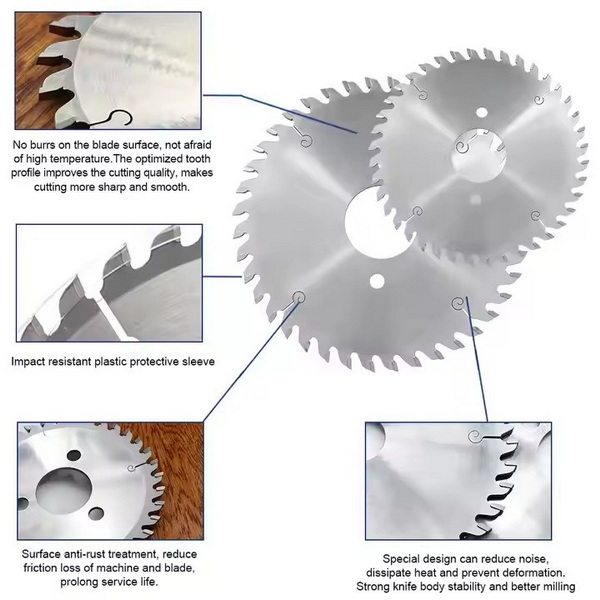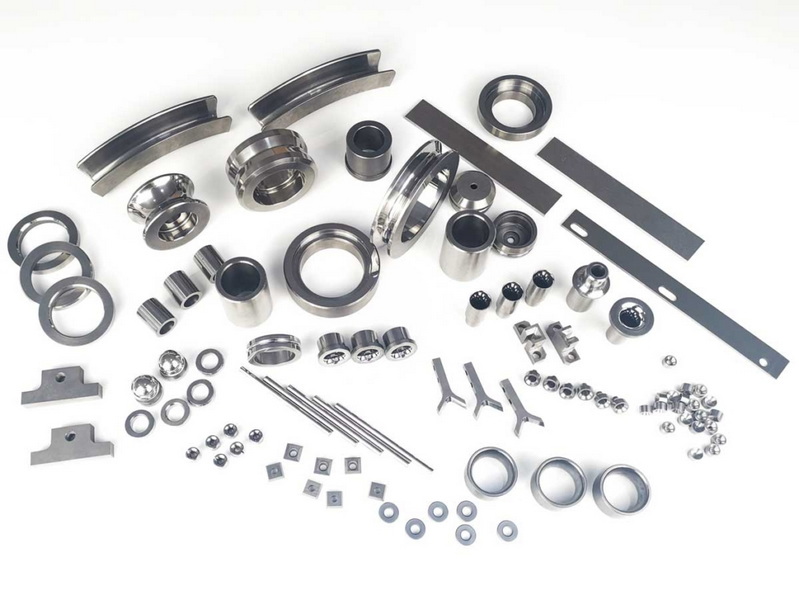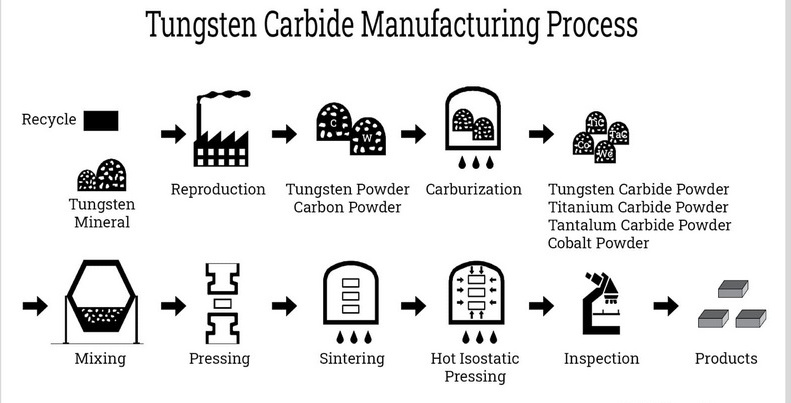Content Menu
● Introduction to Tungsten Carbide
>> Properties of Tungsten Carbide
● Manufacturing Process of Tungsten Carbide
>> 1. Material Mixing
>> 2. Carburization
>> 3. Sintering
● Applications of Tungsten Carbide
>> Advanced Applications
● Challenges and Innovations
>> Sustainable Production Methods
>> Nanotechnology and Composite Materials
● Future Developments
>> Emerging Technologies
● Conclusion
● FAQ
>> 1. What is Tungsten Carbide Used For?
>> 2. How is Tungsten Carbide Made?
>> 3. What are the Properties of Tungsten Carbide?
>> 4. Can Tungsten Carbide be Recycled?
>> 5. Is Tungsten Carbide Toxic?
● Citations:
Tungsten carbide is a highly versatile and durable material widely used in various industrial applications due to its exceptional hardness, wear resistance, and thermal properties. It is particularly valued in cutting tools, wear components, and coatings for aerospace and oil drilling equipment. The process of making tungsten carbide involves several key steps, including material mixing, carburization, and sintering. This article will delve into the manufacturing process of tungsten carbide and explore its applications, properties, and future developments.

Introduction to Tungsten Carbide
Tungsten carbide (WC) is a chemical compound composed primarily of tungsten and carbon atoms, typically in a hexagonal crystal structure. The most common industrial form contains about 94% tungsten and 6% carbon by weight. To enhance its properties, tungsten carbide is often combined with metallic binders like cobalt or nickel, forming a cermet (ceramic-metallic composite) that balances hardness with toughness.
Properties of Tungsten Carbide
- Hardness and Wear Resistance: Tungsten carbide is renowned for its extreme hardness, making it ideal for cutting tools and wear components.
- Thermal Properties: It maintains structural integrity over a wide temperature range, with a high melting point and good thermal conductivity.
- Density and Strength: Tungsten carbide has a high density and compressive strength, exceeding most metals and alloys.
Manufacturing Process of Tungsten Carbide
The production of tungsten carbide involves several critical steps:
1. Material Mixing
Tungsten powder is mixed with carbon black in a ball mill for 2-4 hours to ensure uniformity. This step is crucial as uneven mixing can lead to stratification and unreacted cores in the final product.
2. Carburization
The tungsten-carbon mixture is heated in a graphite furnace at temperatures ranging from 1300°C to 1600°C, depending on the desired particle size. This process converts tungsten into tungsten carbide.
3. Sintering
The tungsten carbide powder is compacted into the desired shape and then sintered at about 1500°C. This process fuses the particles, creating a dense and homogeneous body.
Applications of Tungsten Carbide
Tungsten carbide is used in a variety of industries due to its unique properties:
- Aerospace and Aviation: Coatings for turbine blades and landing gear components.
- Oil and Gas: Drill bits and valve components.
- Manufacturing: Cutting tools and wear components.

Advanced Applications
In recent years, tungsten carbide has also been explored for use in medical implants and jewelry due to its biocompatibility and aesthetic appeal. Additionally, its high density makes it suitable for radiation shielding applications.
Challenges and Innovations
Despite its advantages, the production of tungsten carbide faces challenges such as high energy consumption and environmental concerns. Innovations in powder metallurgy and advanced coatings are expected to enhance its performance in demanding applications while reducing environmental impact.
Sustainable Production Methods
Efforts are being made to develop more sustainable production methods, including the use of recycled tungsten carbide scrap and improving furnace efficiency to reduce energy consumption.
Nanotechnology and Composite Materials
Research into nanoscale tungsten carbide particles and composite materials with enhanced properties is ongoing. These advancements could lead to improved performance in cutting tools and wear components.
Future Developments
As technology advances, there is a growing interest in improving the manufacturing process and properties of tungsten carbide. Innovations in powder metallurgy and advanced coatings are expected to enhance its performance in demanding applications.
Emerging Technologies
Emerging technologies such as additive manufacturing (3D printing) are being explored for producing complex tungsten carbide parts with tailored properties. This could revolutionize the production of customized components for aerospace and medical applications.
Conclusion
Tungsten carbide is a vital material in modern industry, offering unparalleled hardness and wear resistance. Its production involves precise mixing, carburization, and sintering processes. As industries continue to evolve, the demand for high-performance materials like tungsten carbide will remain strong, driving further innovation in its manufacturing and applications.

FAQ
1. What is Tungsten Carbide Used For?
Tungsten carbide is used in various applications, including cutting tools, wear components, and coatings for aerospace and oil drilling equipment due to its exceptional hardness and wear resistance.
2. How is Tungsten Carbide Made?
Tungsten carbide is made by mixing tungsten powder with carbon black, followed by carburization in a graphite furnace, and finally sintering the powder into a dense body.
3. What are the Properties of Tungsten Carbide?
Tungsten carbide is known for its high hardness, wear resistance, thermal conductivity, and compressive strength, making it ideal for high-impact applications.
4. Can Tungsten Carbide be Recycled?
Yes, tungsten carbide can be recycled through processes that involve crushing and re-sintering the material, which helps conserve resources and reduce waste.
5. Is Tungsten Carbide Toxic?
Tungsten carbide itself is not toxic, but the production process may involve hazardous materials. Proper handling and safety measures are necessary during manufacturing.
Citations:
[1] https://heegermaterials.com/blog/90_how-is-tungsten-carbide-made-.html
[2] https://www.linde-amt.com/resource-library/articles/tungsten-carbide
[3] https://www.ee.cityu.edu.hk/~gchen/pdf/Writing.pdf
[4] https://todaysmachiningworld.com/magazine/how-it-works-making-tungsten-carbide-cutting-tools/
[5] https://carbideprocessors.com/pages/carbide-parts/tungsten-carbide-properties.html
[6] https://blog.csdn.net/qq_34917728/article/details/125122327
[7] https://repository.up.ac.za/bitstream/handle/2263/24896/03chapter3.pdf?sequence=4
[8] https://www.tungco.com/insights/blog/5-tungsten-carbide-applications/
[9] https://blog.csdn.net/ztf312/article/details/79551981
[10] https://www.bangerter.com/en/tungsten-carbide/manufacturing-process
















